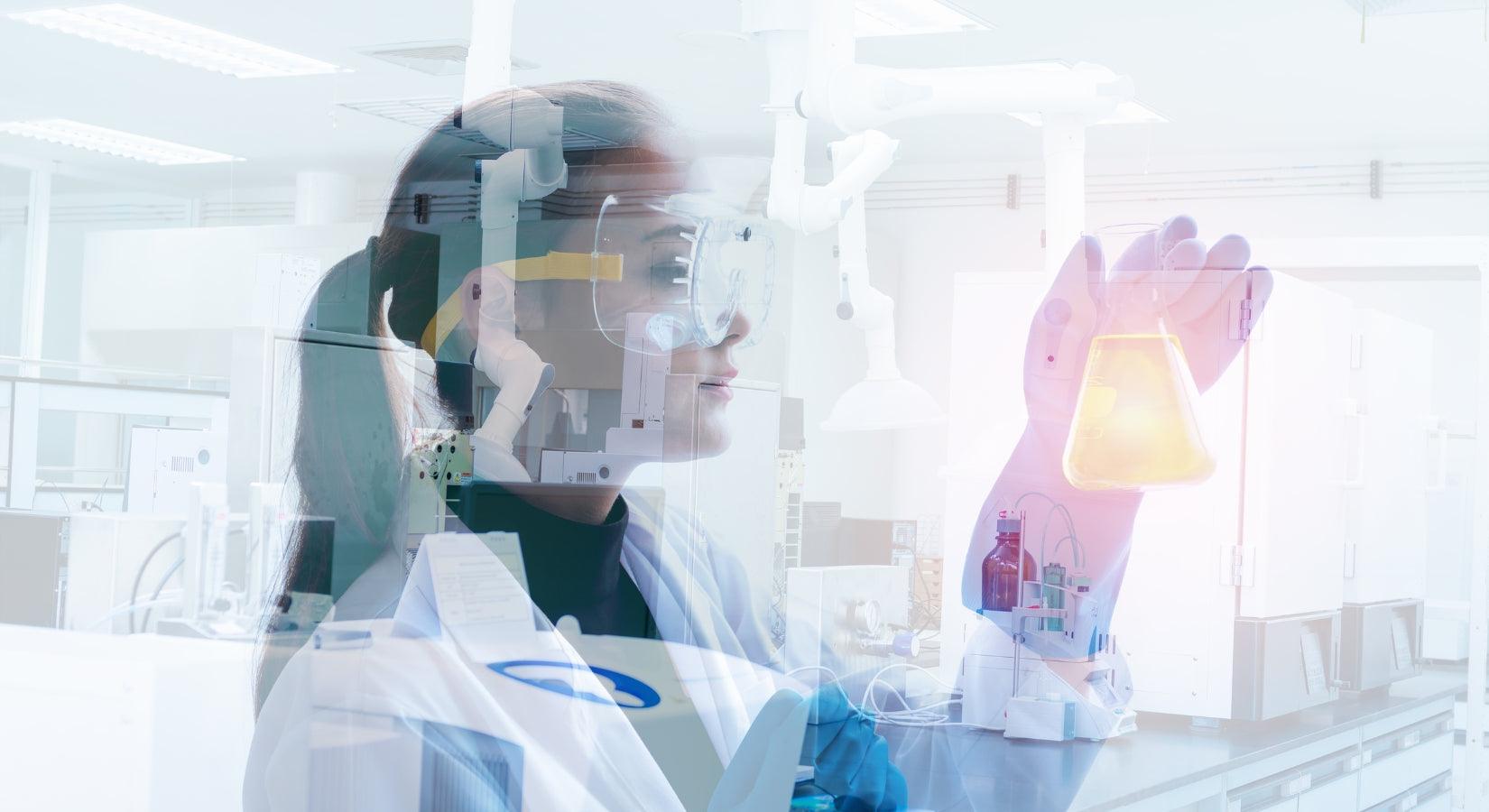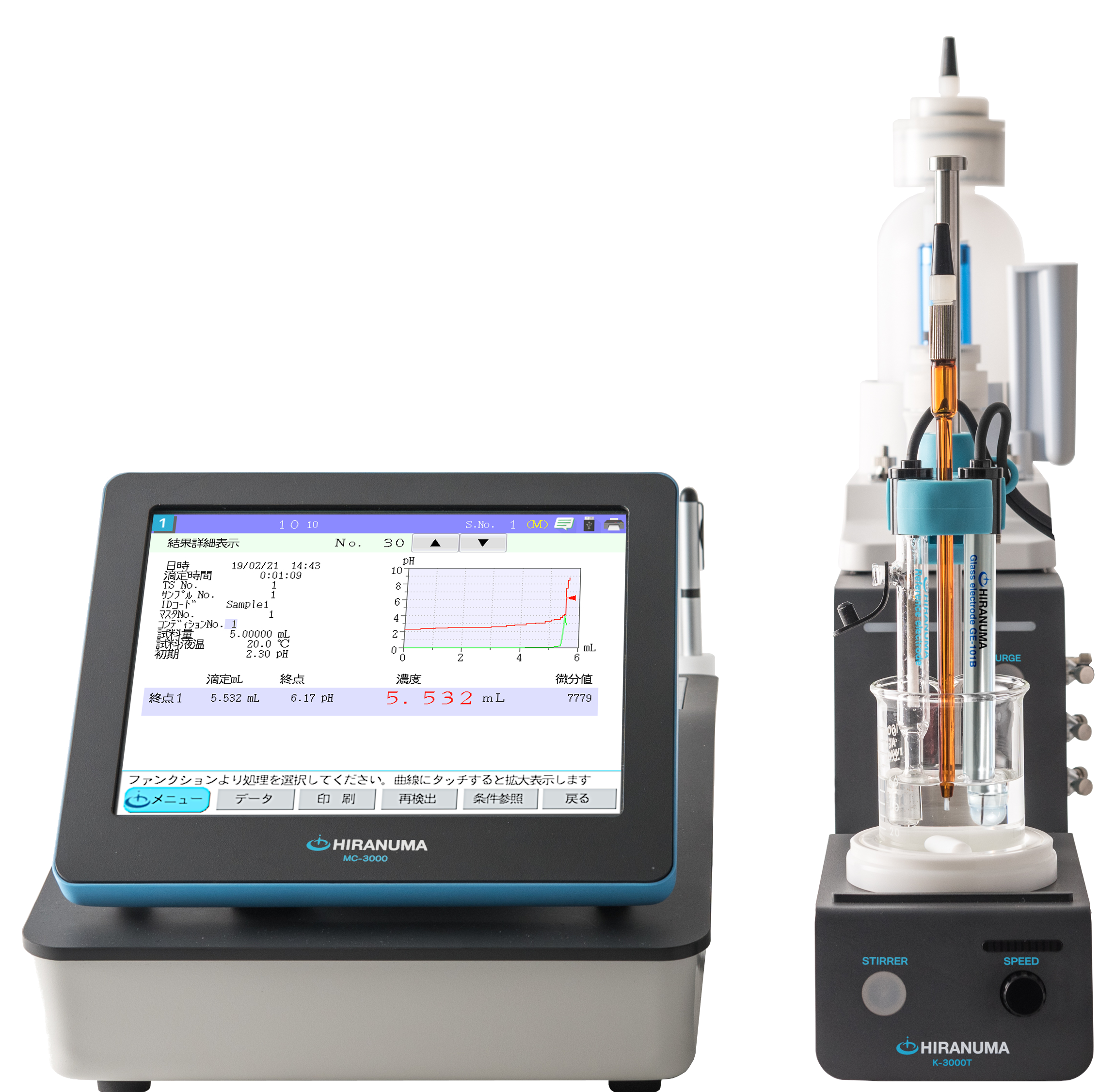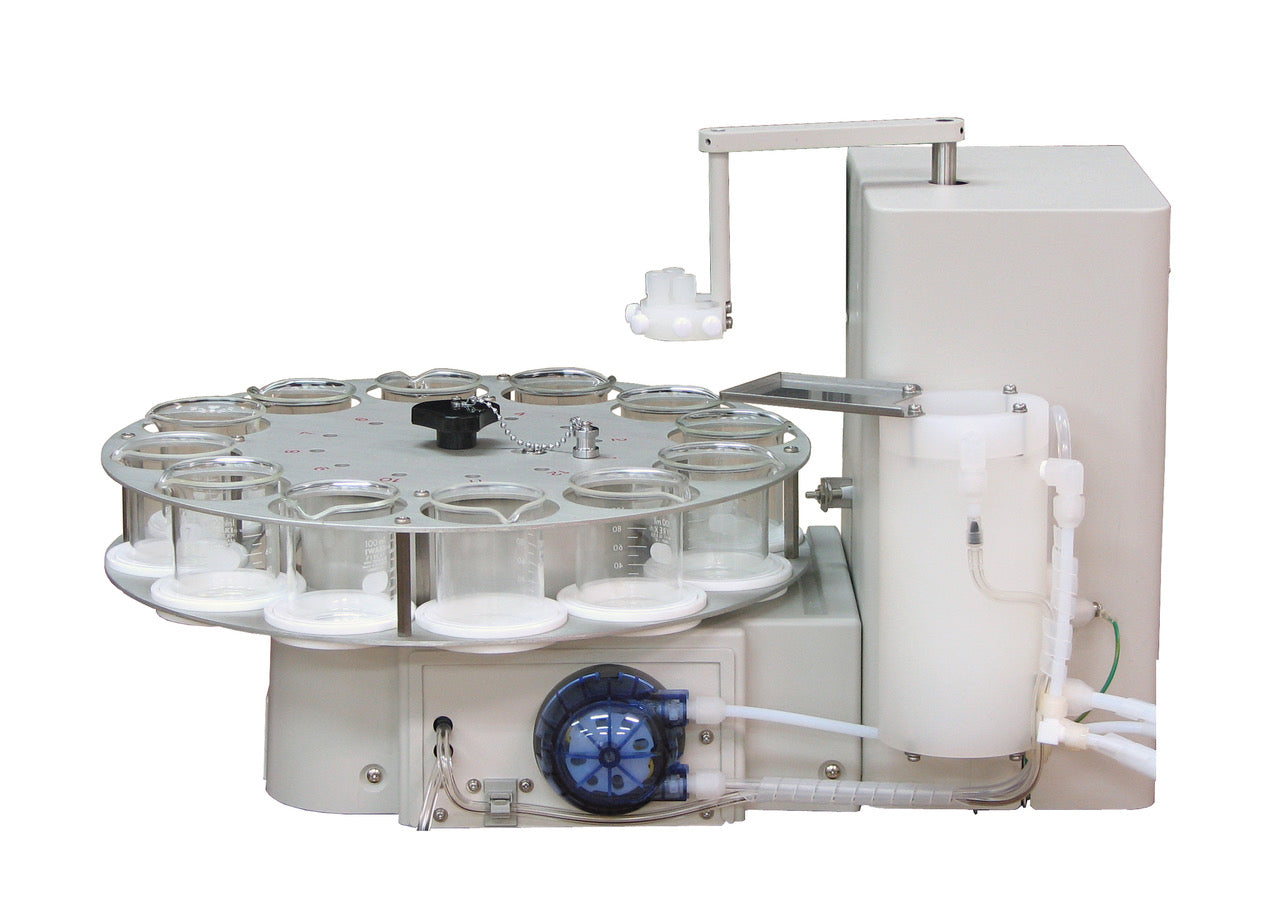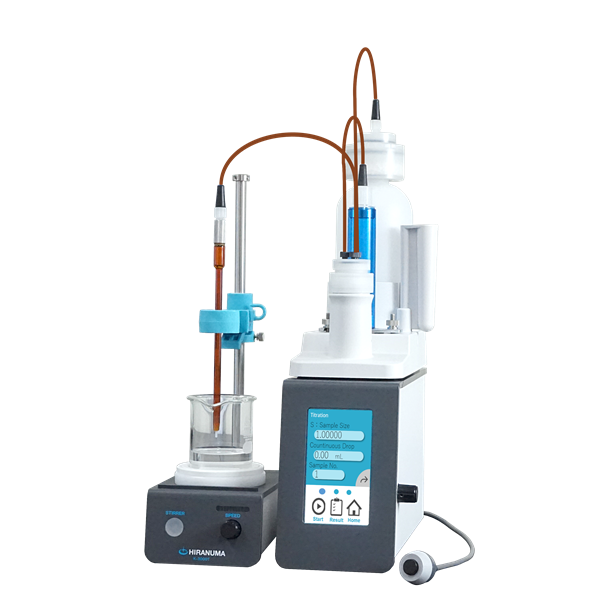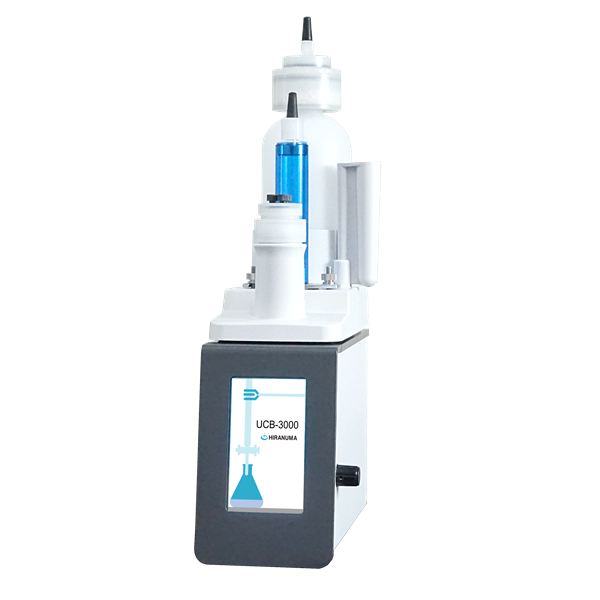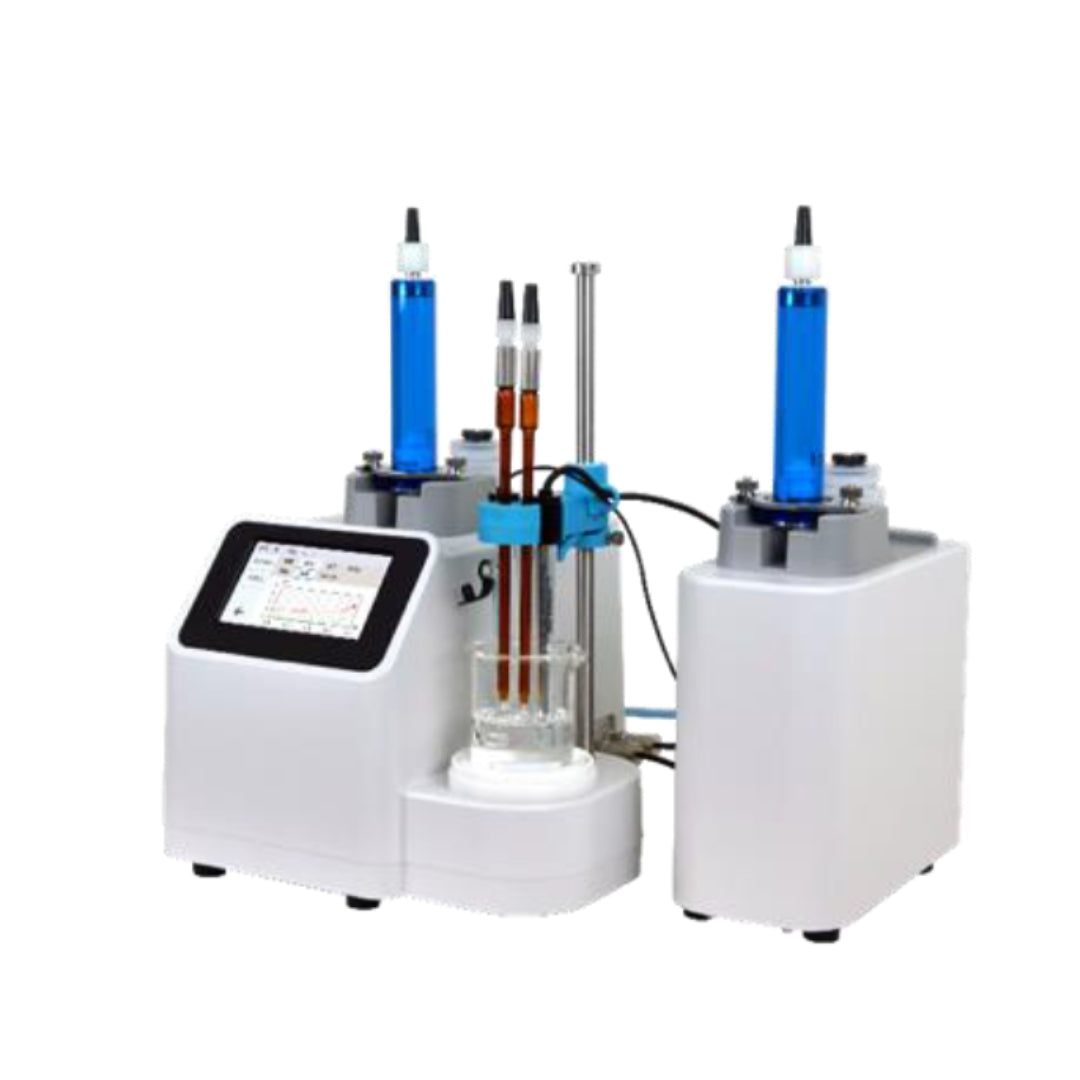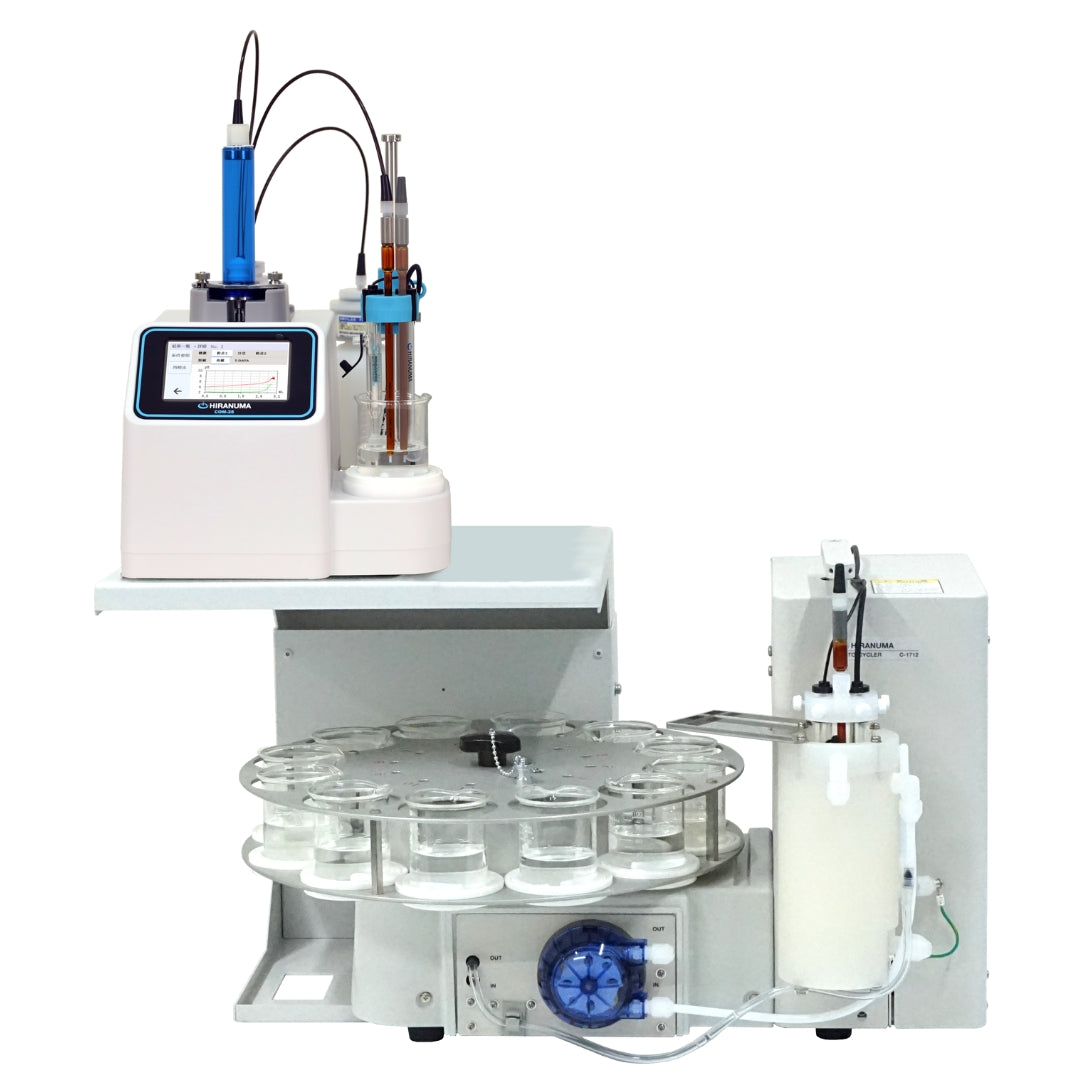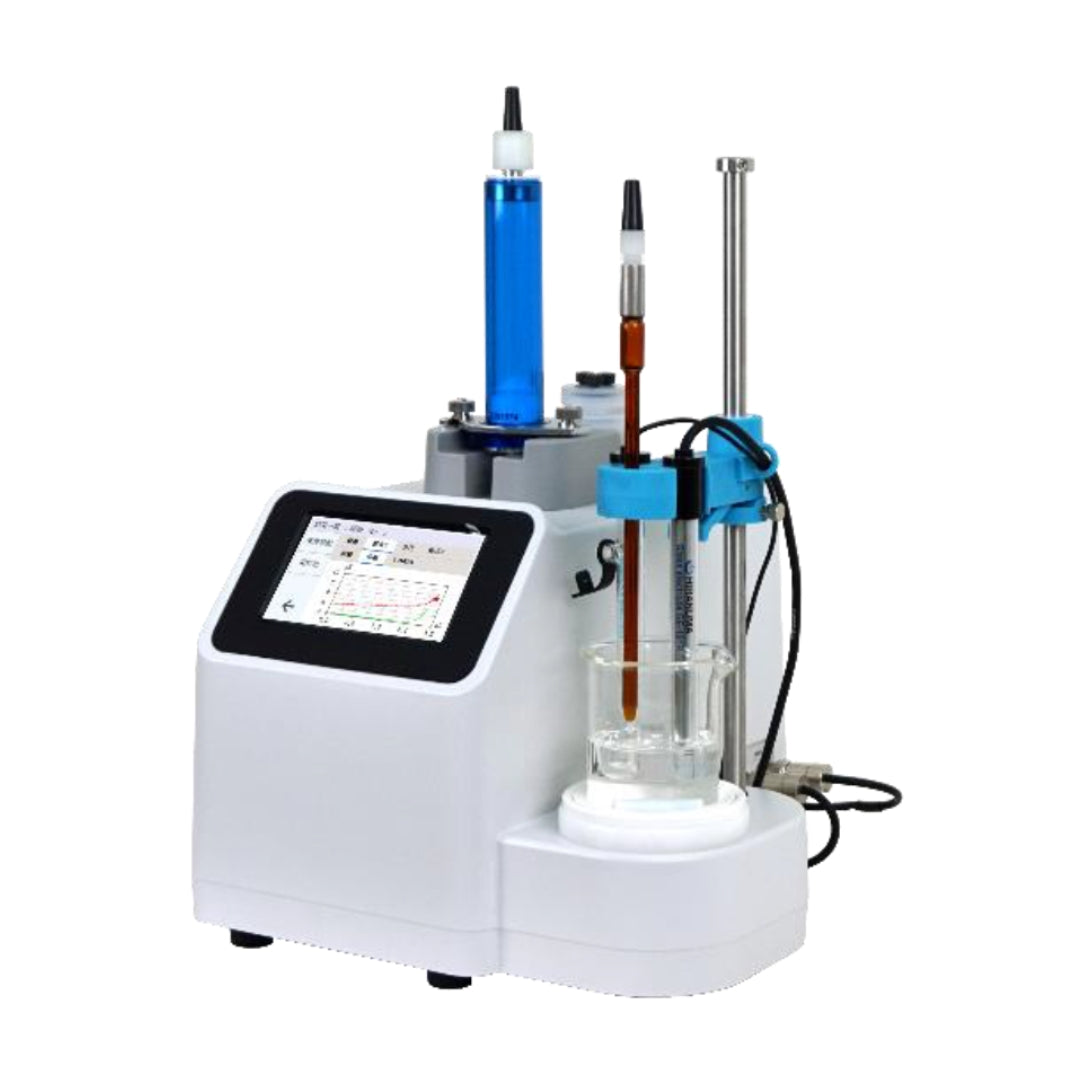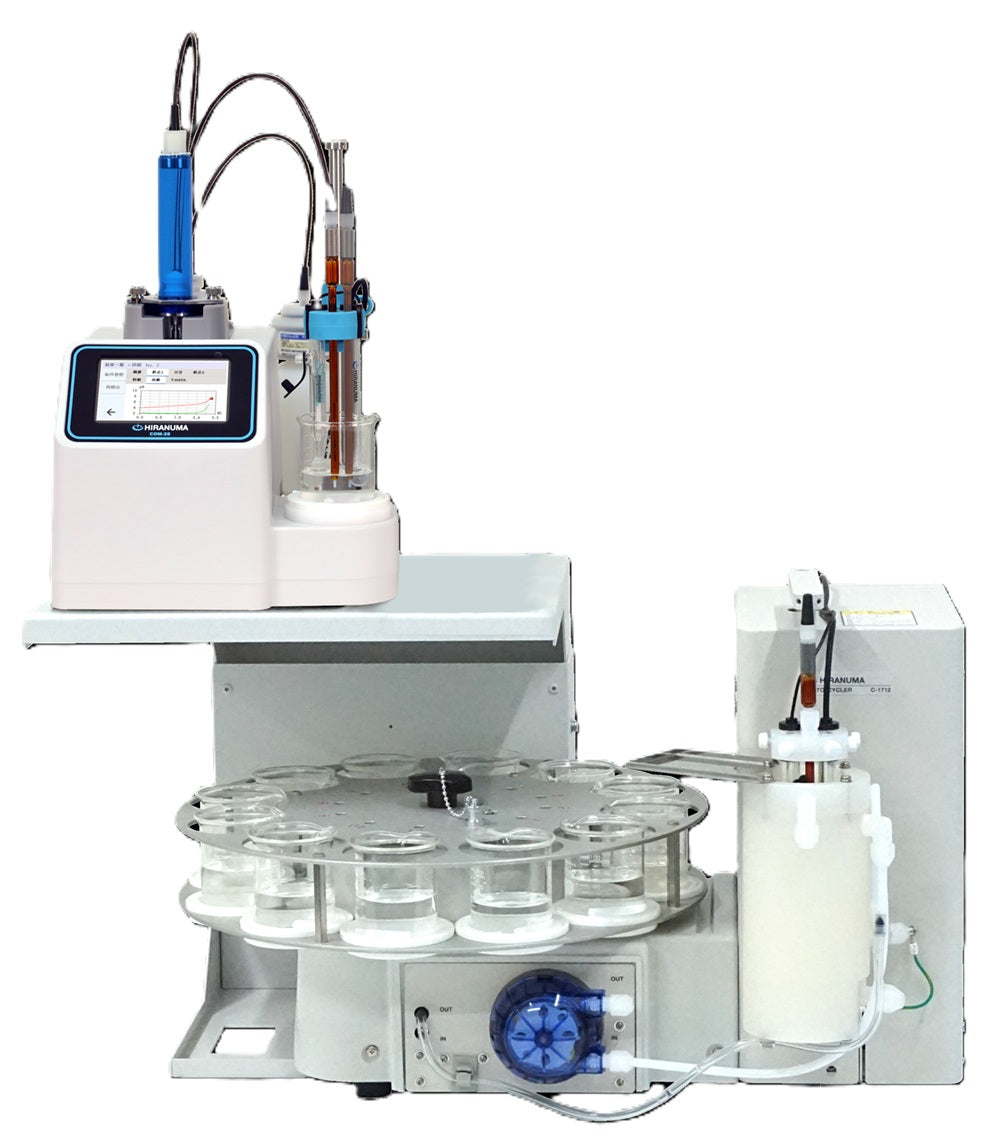| HIRANUMA APPLICATION DATA | Karl Fischer Titrator | Data No. | KF16 | Apr. 19, 2018 |
| Water contents | Ketones, Cyclohexanone – KF Coulometry, Cooled direct injection, Azeotropic distillation |
1. Abstract
Water content of cyclohexanone is determined by Karl Fischer coulometric titrator. In coulometric titration, iodine of Karl Fischer reagent is generated by electrolysis and generated iodine quantitatively reacts with water. Reaction formula is described below.
H₂O + I₂ + SO₂ + 3RN + CH₃OH → 2RN・HI + RN・HSO₄CH₃
2RN・HI → I₂ + 2RN + 2H⁺ + 2e⁻
Ketones and aldehydes would interfere the Karl Fischer reaction by side-reaction with methanol (formula (1)).
R₂CO + 2CH₃OH → R₂C(OCH₃)₂ + H₂O ・・・(1)
Therefore it is necessary to use methanol-free anode and cathode solution. There are commercially available reagents with a special composition for ketones and aldehydes. However, cyclohexanone has particularly a strong side reaction activity, so it is difficult to measure by direct injection method at room temperature. In the measurement of cyclohexanone, it is effective to lower the activity of side reaction by cooling or to separate cyclohexanone and water by distillation.
This application introduces an example for the water determination in cyclohexanone with cooled direct injection method and azeotropic distillation method
2. Apparatus and Reagents
| (1) | Apparatus for cooled direct injection method | ||
| Titrator | : | HIRANUMA Karl Fischer Coulometric titrator AQ-series or MOICO-A19 | |
| Electrolytic cell | : | Electrolytic cell w/cooling chamber P/N : D327326-1 | |
| (2) | Apparatus for azeotropic distillation method | ||
| Titrator | : | Hiranuma Karl Fischer Coulometric titrator AQ-series | |
| Evaporator | : | Hiranuma Oil Evaporator EV-2000L | |
| Electrolytic cell | : | Standard Cell | |
| (3) | Reagents | ||
| Anode solution | : | HYDRANAL coulomat AK (for ketone, Honeywell) | |
| Cathode solution | : | HYDRANAL coulomat CG-K (for ketone, Honeywell) | |
| Distillation solvent | : | Dehydrated toluene | |
| Carrier gas | : | Nitrogen gas | |
3. Procedure
3.1. Cooled direct injection method
| (1) | Fill 100 mL of anode solution and one ampoule of cathode solution into the electrolytic cell as shown in Fig.3.1. |
| (2) | Cool the inside of the cell by circulating 5 °C cold water in the cooling chamber and wait until the temperature stabilizes. |
| (3) | Start blanking to attain stable background. |
| (4) | Wash the syringe with sample. |
| (5) | Draw the sample into syringe and then weigh the syringe. |
| (6) | Inject sample from rubber septum of electrolytic cell as shown in Fig.3.2. |
| (7) | Start titration. Measurement parameter is shown in Table 4.1. |
| (8) | Weigh the syringe again and then set the difference of weight to sample size. |

Fig.3.1. Preparation of the reagents.

Fig.3.2. Injection of sample.
3.2. Azeotropic distillation method
| (1) | Fill 100 mL of anode solution and one ampoule of cathode solution into the electrolytic cell as shown in Fig.3.1. |
| (2) | Start blanking to attain stable background. |
| (3) | Connect electrolytic cell and evaporation chamber with tube. Flow carrier gas with 50 mL/min. |
| (4) | Fill 5 mL of distillation solvent in evaporation chamber and heat the chamber at 120 ℃. |
| (5) | Keep blanking to attain stable background with carrier gas flowing into electrolytic cell. |
| (6) | Wash the syringe with sample. |
| (7) | Draw the sample into syringe and then weigh the syringe. |
| (8) | Inject sample from rubber septum of distillation chamber as shown in Fig.3.3 and Fig.3.4. |
| (9) | Start titration. Measurement parameter is shown in Table 4.2. |
| (10) | Weigh the syringe again and then set the difference of weight to sample size. |

Fig.3.3. Schematic diagram of azeotropic distillation method.

Fig.3.4. Sample injection into evaporation chamber.
4. Parameters and results
Table 4.1 Parameters for cooled direct injection method
| Condition File | ||
| Cal Mode | 0:Sample weight (net) | |
| X=(H₂O-BLANK)/SIZE | ||
| Interval Time | 20 | sec |
| Current | SLOW | |
| S.Timer | 0 | min |
| Blank Value | 0 | µg |
| Unit Mode | AUTO | |
| Auto Interval | 0 | g |
| Minimum Count | 5 | µg |
| Back Ground | ON | |
| SampleSizeInput | Every Time | |
| Cell Type | Standard |
Table 4.2 Parameters for azeotropic distillation method
| Condition File | ||
| Cal Mode | 0:Sample weight(net) | |
| X=(H₂O-BLANK)/SIZE | ||
| Interval Time | 40 | sec |
| Current | SLOW | |
| S.Timer | 0 | min |
| Blank Value | 0 | μg |
| Unit Mode | AUTO | |
| Auto Interval | 0 | g |
| Minimum Count | 5 | μg |
| Back Ground | ON | |
| Sample Size Input | Every Time | |
| Cell Type | Standard |
Table 4.3 Results of water content measurement in cyclohexanone
| Method | Sample size (g) |
Water (μg) |
Water content (ppm) |
Statistics result | |
| Cooled direct injection | 0.2692 | 55.1 | 204.7 | Avg. | 224.8 ppm |
| 0.2581 | 62.6 | 242.5 | SD | 19.0 ppm | |
| 0.2711 | 61.6 | 227.2 | RSD | 8.5 % | |
| Azeotropic distillation | 1.3661 | 300.2 | 219.7 | Avg. | 220.7 ppm |
| 1.5261 | 338.9 | 222.1 | SD | 1.2 ppm | |
| 1.5824 | 348.6 | 220.3 | RSD | 0.5 % | |
5. Note
| (1) | Azeotropic distillation method achieved better results with repetition accuracy than the cooled direct injection method. Since the boiling point of cyclohexanone was 155 °C higher than water and toluene, it seems that water could be separated well from cyclohexanone by distillation. The distillation method can also be applied to paints containing resins and lubricants containing additives. |
| (2) | When substances that cause side reactions flow out from the distillation chamber into the cell, the background gets unstable or high. In that case, it may be improved by reducing the amount of sample or replacing titration solvent with new one. |
| Keywords: | Karl Fischer, Coulometric titration, Cooled direct injection, Azeotropic distillation, Ketone |

